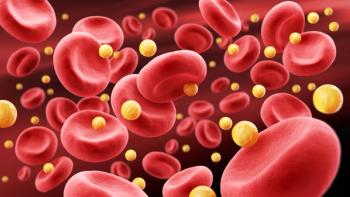
Prediabetes Elevates the Risk of Developing Cancer
A recent metaanalysis suggests that prediabetes increases the risk of developing certain cancers, particularly in tissues located near the gastrointestinal tract.
A recent metaanalysis suggests that prediabetes increases the risk of developing certain cancers, particularly in tissues located near the gastrointestinal tract.
On September 11, 2014, researchers Huang et al published a metaanalysis in the journal Diabetologia evaluating the risk of developing cancer in patients with prediabetes. Researchers identified prospective cohort studies using several databases, including PubMed, EMBASE and the Cochrane Library.
Studies were vetted by 2 independent reviewers, and were grouped for analysis in clusters of studies that were similar in study characteristics and inclusion criteria. For instance, studies varied in several ways, including the end points evaluated, the age of participants, the sex of participants, follow up duration, and participant ethnicity.
Of 891,426 participants in 16 prospectively-designed studies, investigators identified a significant 15% increase in the overall risk of cancer among patients with prediabetes (relative risk 1.15; 95% CI 1.06 to 1.23). Upon subgroup analysis, this result held true across patients with a range of ages, in patients of several ethnicities, and over diverse follow-up durations.
According to Huang et al, prediabetes appears to increase the risk of stomach cancer, colorectal cancer, liver cancer, pancreatic cancer, breast cancer, and endometrial cancer. Of these cancers, those located in the tissues of, or adjoining, the gastrointestinal tract seemed to be most strongly associated with prediabetes (including liver, endometrial, stomach, and colorectal cancers). However, there was no association found between prediabetes and lung cancer, prostate cancer, ovarian cancer, kidney cancer, or bladder cancer.
A consensus report published in the journal Diabetes Care in 2010 confirms the association between cancer and diabetes. Scientists have questioned whether this association is due to diabetes itself, or due to the effect of treatments for diabetes. The fact that patients with prediabetes have an increased risk of developing cancer—even in the absence of treatment—suggests that the disease process of diabetes itself, and not the treatments for the condition, are the cause of the increased risk of cancer.
References:
- Huang Y, Cai X, Qiu M, et al. Prediabetes and the risk of cancer: a meta-analysis. Diabetologia. 2014.
- Giovannucci E, Harlan DM, Archer MC, et al. Diabetes and cancer: a consensus report. Diabetes Care. 2010;33(7):1674-1685.
Newsletter
Stay informed on drug updates, treatment guidelines, and pharmacy practice trends—subscribe to Pharmacy Times for weekly clinical insights.


















































































































































































































